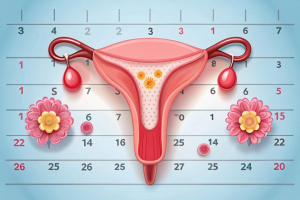Every woman has probably noticed that menstruation is not always the same. These differences concern duration and frequency, as well as the appearance and consistency of discharge, since sometimes the blood becomes more liquid, and sometimes it contains clots. In general, the formation of clots during menstruation is a normal phenomenon and usually not a cause for concern.
What are the reasons?
What causes the formation of blood clots during menstruation? Menstruation is only part of the monthly cycle, which lasts on average about 28-30 days, during which various internal changes occur. In particular, the walls of the uterus gradually change their appearance, preparing the body for a possible pregnancy. They thicken, allowing the embryo to attach in case of conception. However, if this does not happen, the uterine lining is shed, leading to menstrual blood loss.
This is a natural process, as is the formation of clots in this phase of the cycle, which is an automatic reaction of the body. During bleeding, for example, after an injury, the blood clots, making the bleeding less heavy and avoiding massive blood loss.
This automatic mechanism is also observed during menstrual bleeding, but to a lesser extent. This is a necessary blood loss, and the uterus produces a natural anticoagulant. However, especially in the first few days of menstruation, blood loss can exceed the body's ability to produce anticoagulants, leading to the formation of small blood clots, usually ranging in size from 5 mm to 4 cm.
Such clots are more common in women with heavy periods, while they are rare in women with light periods. Furthermore, they usually form at night. If the clots are exactly like this and are not accompanied by other symptoms or physical problems, there is no need to worry. However, if they become more frequent, it could be a sign of other health issues.
What can blood clots signal?
Decreased iron levels in the blood compared to the norm is a fairly common condition for many women, but it should not be underestimated, especially considering it can worsen during menstruation. With particularly heavy periods, iron levels can drop even further. This, in turn, can hinder the uterus' production of natural anticoagulants, significantly increasing the likelihood of clot formation. If you notice more clots in your menstrual blood than usual, it is recommended to monitor the situation and check your iron levels.
Hormonal disorders: Hormones have the strongest influence on the nature of menstruation, as well as the presence or absence of clots, especially in teenagers, women who have recently given birth, or women in perimenopause, who are prone to significant imbalances of estrogen and progesterone.
Endometriosis is a disease that affects millions of women and is often asymptomatic, especially in the early stages. If you have painful periods accompanied by the discharge of large blood clots, this should not be ignored. Endometriosis is characterized by the formation of a very thick mucous membrane around the uterus and nearby organs, which can cause clots during menstruation.
Finally, if menstruation is accompanied by significant pain, it is important to consult a gynecologist at the "Bogolyuby" Medical Center to accurately diagnose the problem. Pelvic inflammatory diseases usually manifest as severe pelvic pain and the formation of blood clots. This is caused by bacteria entering the internal organs from the vagina. Also, the presence of fibroids or cysts can also be a cause of the aforementioned problem.
If there is a possibility of pregnancy (there was unprotected intercourse, a delay, a positive test) and a "menstruation" with unusual clots suddenly starts, this is a reason to see a doctor as soon as possible, as it could be a sign of a miscarriage.
Number of views: 821



















